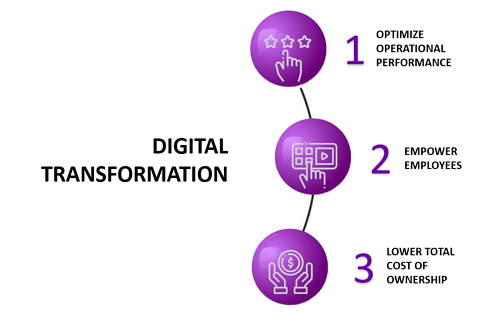How new digital capabilities can transform legacy operational technology
Posted: April 2, 2019
At the dawn of the 21st century, digital technology had been broadly implemented across the food and beverage industry, successfully automating production processes and machinery and delivering a new level of production efficiency. What quickly became clear though, was that as machines became more automated and efficient, that the operator, far from becoming less significant, became the key to unlocking production potential. Terms like “Islands of Automation” became the catch cry for the implementation of plant-wide control networks and HMI and SCADA systems that became the foundation of today’s ‘OT.’
These implementations may not have foreseen the need to support communication across cyber-physical systems, the new-found mobility of operators and supervisors, nor the need for interconnection across the digital operations value chain to enable a smart, integrated factory. Still, we may not have to rip and replace these existing systems to capture the benefits of Industry 4.0. Instead, consider a digital transformation approach which overlays new digital capabilities. This can be anything from retrofitting specific equipment that provides data points or upgrading point solutions to applying an Industrial Internet of Things (IIoT) architecture on top of the networking infrastructure.
The varying conditions and needs of each plant imply that there isn’t any standardized “to-do list” that we can emulate. Similarly, the degree of transformation required varies from plant to plant. So, what’s the best way forward for food and beverage manufacturing plants in this digital transformation journey?
To achieve this successfully, we can cross-check our actions against a couple of core intent of the transformation:
- Optimize operational performance
- Empower employees
- Reduce total cost of ownership

1. Optimize operational performance
The key to optimizing operational performance is presenting production information in ready-to-consume format to provide immediate feedback to the operations teams for short interval control. This is where we can adopt a contemporary manufacturing operations management system to execute this task, if the current system is not already able to automatically obtain data from sensors and categorize them into meaningful information.
As with most plants that are still collecting, consolidating and sorting data manually, the time lapse between the actual occurrences and rectification actions might possibly result in a batch to be eventually scrapped. In a less upsetting scenario, the production is just not operating at its maximum capacity to optimize performance. A fitting manufacturing operations management system not only optimizes production execution and quality control, it also supports business rules enforcement and change management to enable performance sustainability. As such systems are standardized across plants they become a platform for digital transformation.
Another aspect to consider is introducing predictive asset analytics into the system. Early warnings of impending asset failures enable frontline personnel to act in the interest of prevention, thereby reducing unplanned downtime. A good asset analytics system can be easily integrated with the manufacturing operations system, and the connected system helps in data deployment and analysis to prevent the same breakdown and quality issue from reoccurring.
2. Empower employees
Unlocking valuable operational information is pointless if they are not readily available to personnel who need it, as and when they need it. Besides frontline operators who are dependent on real-time information to make continuous improvements during their shifts, the information when uploaded into the cloud, supports easy monitoring and analysis for managers. The ability to access information on to go enhances convenience and enables faster decision-making. This is achievable by connecting data points through an IIoT platform and providing mobile options for operators and supervisors to access that data and receive critical notifications. This is an overlay option versus a costly rip-and-replace decision.
3. Reduce total cost of ownership
Food and beverage manufacturers operate on competitively thin margins. It is not easy to justify capital spending, even for brownfield manufacturing plants that are more than two decades old. Adding new digital capabilities to an existing legacy system is a cost-effective alternative, and this often comes in the form of lightweight solutions or by-subscription model.
A cloud-based solution eliminates the need for additional investment in hardware servers and can be easily deployed over multiple sites. Having said that, the emerging best practice is for a hybrid setup where mission critical systems such as SCADA running on the edge, and with production performance data pushed to the cloud for storage, monitoring, reporting and analysis.
A subscription-based model allows manufacturing plants to select modules/point capabilities, within a packaged solution or from the same solution provider, based on specific needs. The advantage here is lower cost instead of paying for features not required and ease of exit from the service.
My take is that digital transformation does not have to be overly-complicated and always keeping our core intent in mind helps in charting out a clear and concise course of action in the journey.
Related blog posts
Stay in the know: Keep up to date on the latest happenings around the industry.